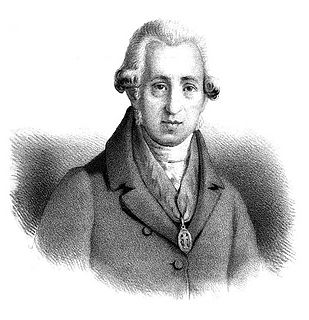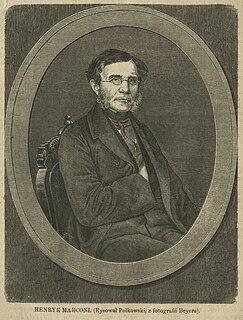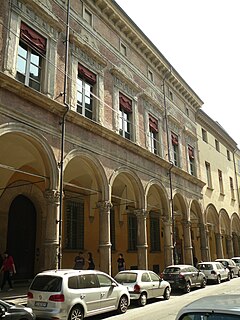
Adria is a town and comune in the province of Rovigo in the Veneto region of Northern Italy, situated between the mouths of the rivers Adige and Po. The remains of the Etruscan city of Atria or Hatria are to be found below the modern city, three to four metres below the current level. Adria and Spina were the Etruscan ports and depots for Felsina. Adria may have given its name during an early period to the Adriatic Sea, to which it was connected by channels.

Guido Reni was an Italian painter of the Baroque period, although his works showed a classical manner, similar to Simon Vouet, Nicholas Poussin and Philippe de Champaigne. He painted primarily religious works, but also mythological and allegorical subjects. Active in Rome, Naples, and his native Bologna, he became the dominant figure in the Bolognese School that emerged under the influence of the Carracci.

GiacomoBarozzida Vignola was one of the great Italian architects of 16th century Mannerism. His two great masterpieces are the Villa Farnese at Caprarola and the Jesuits' Church of the Gesù in Rome. The three architects who spread the Italian Renaissance style throughout Western Europe are Vignola, Serlio and Palladio.
In contract bridge, the trump squeeze is a variant of the simple squeeze. In a trump squeeze, declarer has a suit that can be established by ruffing, but the defender being squeezed is guarding that suit. However, if he happens to also guard another suit, the squeeze card will force him to unguard one.

Alessandro Tiarini was an Italian Baroque painter of the Bolognese School.

Marcantonio Franceschini was an Italian painter of the Baroque period, active mostly in his native Bologna. He was the father and teacher of Giacomo Franceschini.

Dorotea Bucca (1360–1436) was an Italian physician. Little is known of her life, except that she held a chair of medicine and philosophy at the University of Bologna for over forty years from 1390. Her father had previously held the same chair.

The Accademia di Belle Arti di Bologna is a public tertiary academy of fine art in Bologna, in Emilia-Romagna in northern Italy. It has a campus in Cesena.
Vittorio Bigari was an Italian painter of the late-Baroque period.

Louis Masreliez, born Adrien Louis Masreliez, was a French born, Swedish painter and interior designer.

Palazzo Re Enzo is a palace in Bologna, northern Italy. It takes its name from Enzio of Sardinia, Frederick II's son, who was prisoner here from 1249 until his death in 1272.

Enrico Marconi, known in Poland as Henryk Marconi, was an Italian-Polish architect who spent most of his life in Congress Poland.

Palazzo d'Accursio is a palace once formulated to house major administrative offices of the city of Bologna, region of Emilia-Romagna, Italy. It is located on the Piazza Maggiore, and is the city's Town Hall. The palace is also home to the Civic Art Collection, with paintings from the Middle Ages to the 19th century; the Museo Morandi, with the works by Giorgio Morandi; and the Biblioteca Salaborsa, the town libraries.
The Philadelphia Church of God (PCG) is an international church based in Edmond, Oklahoma, USA. The PCG traces its roots to the Worldwide Church of God (WCG), founded by Herbert W. Armstrong (1892–1986), and it teaches new revelation that its founder, Gerald Flurry, has been shown by God from the Bible since Armstrong's death. It was founded with the stated purpose of continuing Armstrong's teachings, which were re-evaluated and subsequently rejected by WCG after Armstrong's death, as it came to accept mainstream evangelical Christian teachings, such as the trinity. Armstrong had rejected the trinity doctrine in favor of the view that God is not one but 2 distinct God beings into which family, according to Armstrong, humans, "upon true conversion and spiritual growth", may be born.

The Anatomical Theatre of the Archiginnasio is a hall once used for anatomy lectures and displays held at the medical school in Bologna, that used to be located in the Palace of the Archiginnasio, the first unified seat of the University of Bologna. A first anatomical theatre was constructed in 1595, in a different location, but it was replaced by a bigger one built between 1636 and 1638 in the current location, following the design of the architect Antonio Levanti. The ceiling and the wall decoration were completed from 1647 to 1649 but only the lacunar ceiling dates from this period, with the figure of Apollo, the god of Medicine, in the middle, surrounded by symbolic images of constellations carved in wood.
Palazzo Núñez-Torlonia is a palace in Rome, central Italy, the current home of the Torlonia family.
Giovanni Battista Sangiorgi (1765–1837) was an Italian painter of the Neoclassical period

The Palazzo Bonasoni is a Renaissance-style palace in Via Galliera 21 in central Bologna, Italy. It stands across the street from the Palazzo Felicini.

Hitori Bocchi no Marumaru Seikatsu is a Japanese four-panel manga series written and illustrated by Katsuwo, which began serialization in ASCII Media Works' Comic Dengeki Daioh "g" magazine in 2013. Four tankōbon volumes have been released and compiled so far. An anime television series adaptation by C2C began airing in Japan in April 5, 2019.





















